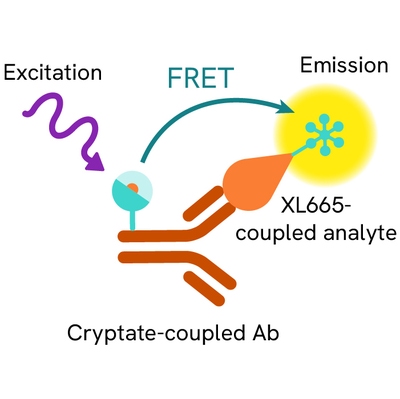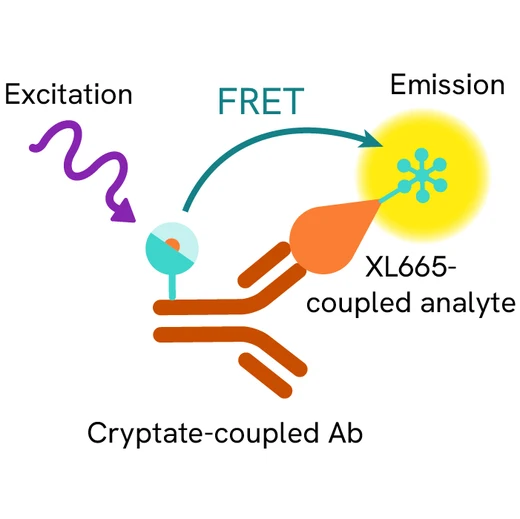

HTRF Human ApoE Detection Kit, 500 Assay Points








| Feature | Specification |
|---|---|
| Application | Protein Quantification |
| Sample Volume | 10 µL |









Product information
Overview
Apolipoproteins are proteins that bind to lipids to form lipoproteins, whose main function is to transport lipids. Apolipoproteins are key in maintaining the structural integrity and solubility of lipoproteins. ApoE is a fat-binding protein that is part of the chylomicron and Intermediate-Density Lipoprotein (IDLs). It is essential for the normal catabolism of triglyceride-rich lipoprotein constituents. A correlation between ApoE and neurodegenerative conditions such as multiple sclerosis and Alzheimer's disease has been found.
How it works
Assay principle
The Apolipoprotein E assay is a sandwich immunoassay involving two monoclonal antibodies, one labelled with Eu-Cryptate (Donor) and the second with d2 (Acceptor). The intensity of the signal is proportional to the concentration of apolipoprotein present in the sample.

Assay protocol
The ApoE assay features a streamlined protocol with only one incubation step following the sample/calibrator and Antibody conjugates dispensing. The antibodies labelled with HTRF donor and acceptor may be pre-mixed and added in a single dispensing step to further streamline the assay procedure. This protocol requires a single 3-hour incubation period at RT.

Assay details
Apolipoprotein E standard curve
10 µL of recombinant protein in diluent #5 were dispensed to a low volume white microplate before the addition of 10 µL of the premixed HTRF anti ApoE detection reagents. The HTRF signal was recorded after 2h incubation at room temperature.

Specifications
| Application |
Protein Quantification
|
|---|---|
| Automation Compatible |
Yes
|
| Brand |
HTRF
|
| Detection Modality |
HTRF
|
| Product Group |
Kit
|
| Sample Volume |
10 µL
|
| Shipping Conditions |
Shipped in Dry Ice
|
| Target Class |
Biomarkers
|
| Target Species |
Human
|
| Technology |
TR-FRET
|
| Therapeutic Area |
Cardiovascular
Metabolism/Diabetes
NASH/Fibrosis
Neuroscience
|
| Unit Size |
500 assay points
|
Video gallery
Resources
Are you looking for resources, click on the resource type to explore further.
Atherosclerosis pathogenesis, cellular actors, and pathways
Atherosclerosis is a common condition in which arteries harden and...
Emerging pathways to neuroinflammation and neurodegeneration
Neurodegenerative diseases, such as amyotrophic lateral sclerosis...
Discover the versatility and precision of Homogeneous Time-Resolved Fluorescence (HTRF) technology. Our HTRF portfolio offers a...
This guide provides you an overview of HTRF applications in several therapeutic areas.


Loading...
How can we help you?
We are here to answer your questions.






























